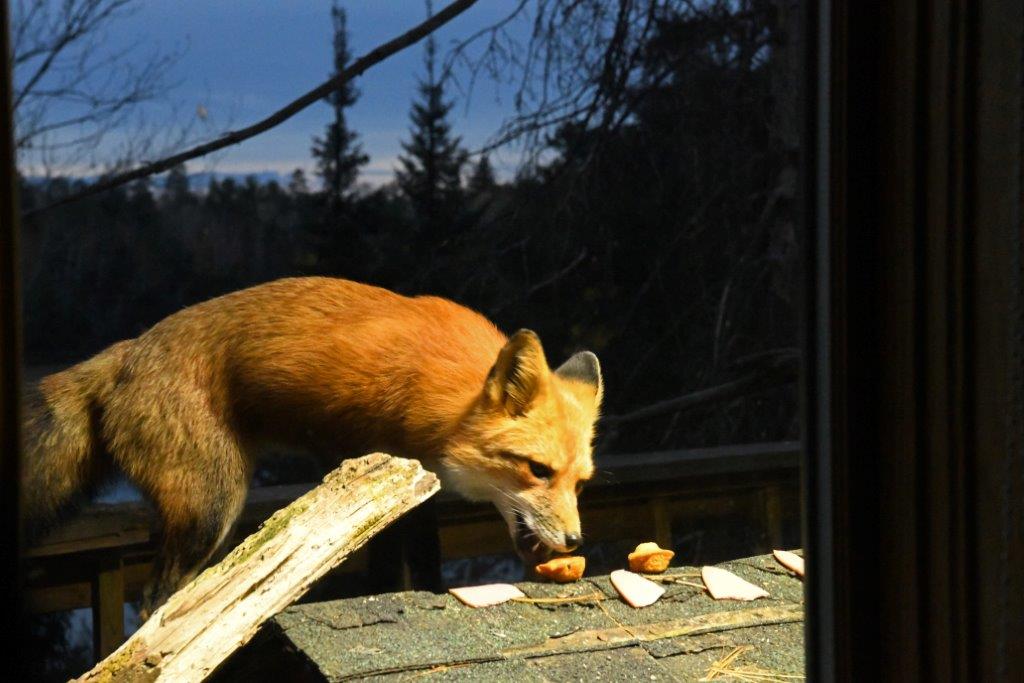Nocturnal Bears, Early Risers, and Tamarack Color - UPDATE October 24, 2022
Grackle

The remaining bear visitors here at the WRI are a couple shy bears that our trail cameras picked up in the dark of night. We continue to put food out to test how long they will come. We have found in the past that bears here enter hibernation on schedule in October whether food is available or not. This is different from bears in the eastern deciduous forests where some stay up all winter if there are enough beechnuts, acorns, and hickory nuts to make it worthwhile. Here around Ely, bears haven’t had fall foods for millennia (acorns are too scarce to count), so bears here are genetically programmed to hibernate on schedule for the usual six to seven and a half months of no food.
Red fox
Red fox

Blue jay
Blue jay

The cameras show that the red fox is mostly nocturnal, too. Yesterday morning, the fox checked in here while it was dark but getting close to dawn. It found a smorgasbord of bologna, blueberry mini-muffins, and a baby mouse. In the picture, the fox opened its mouth, showing that its first choice was a mini-muffin. It did the same upon returning. The third trip, it was the mouse, and that was it. A few minutes later, a blue jay that came out of the dark took advantage of the deck lights to show me that it, too, preferred the mini-muffins.
Tamarack
Tamarack

Eagle catching mallard - 2019
Eagle catching mallard - 2019

On the water as it got light, the ducks showed they can tell one bird from another. The ducks ignored other ducks flying by, and they usually ignored ravens; but they frantically rose in unison when an eagle flew over at tree-top height. Some ducks make mistakes, though. Three falls ago, Donna and I saw an eagle cruise in low and snatch up a hapless female in its talons (picture from September 28, 2019).
Most of the color is from tamaracks now, but iridescent grackles are doing their best to add beauty.
Each season has its own beauty and excitement. Bear activities were hard to see and appreciate until den cams came along and brought so many of us together around Lily, Hope, and other winter bear families.
Thank you for all you do,
Lynn Rogers, Biologist, Wildlife Research Institute and North American Bear Center

 Author
Topic: Jewel and her cubs (Read 2258569 times)
Author
Topic: Jewel and her cubs (Read 2258569 times)
